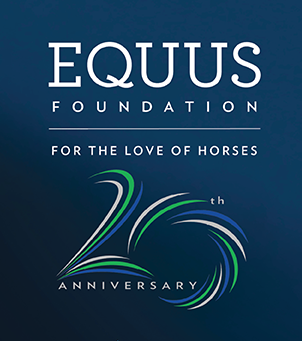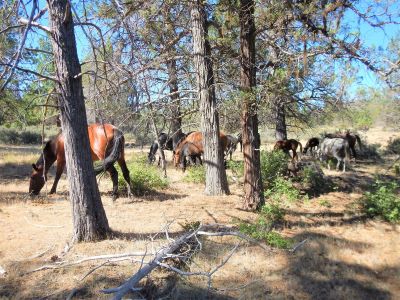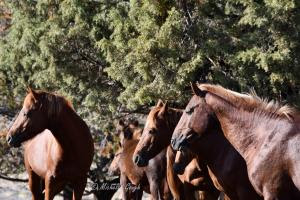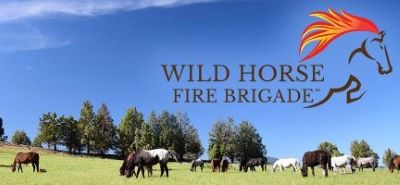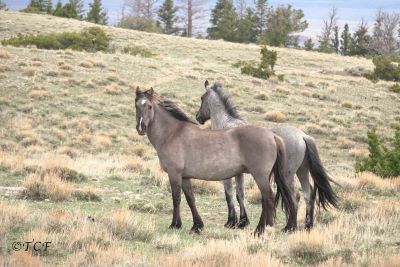Due to legal actions taken by the legal team for Wild Horse Fire Brigade at Vermont Law, led by our legal advisor, Professor-Litigator Michael Harris, the DOJ attorney had the BLM in Klamath Falls Oregon temporarily stop the bait and trap at and around the Pokegama HMA on Oct 4th, to give time for the DOJ to consider our lawsuit and potentially file a reply to our legal action filed in Federal Court in Washington D.C.
The press release below cites the lawsuit brought against the BLM by Wild Horse Fire Brigade’s legal team at Vermont Law:
https://www.einnews.com/pr_news/596270269/vermont-law-and-graduate-school-files-motion-for-preliminary-injunction-in-federal-court-to-stop-blm-wild-horse-roundup
Now, here comes the American Wild Horse Campaign (‘AWHC’) who sends out an article making it seem like they are somehow involved in stopping the Pokegama roundup, arguably to grift donations via a donation button at the bottom of their article page for simply citing already published news, but actually doing nothing to help in any way: they are not litigating, they have not contributed a dime; they are just watching, just like when they boasted about watching nearly 1,000 mustangs go to slaughter via their so-called ‘investigation’.
This is akin to offering just a part of the total $25,000 reward for the murderers of the Alpine horses.
AWHC full well knows that on average, only about 17% of such rewards are ever claimed. So they get lots of press and limelight for probably not having to fork out a dime.
It’s schemes like these that bring in lots of donations with little money spent that builds massive multi-million-dollar bank accounts funded by good-hearted donations to these BIG nonprofits. HSUS, for instance, has over $100 million in donations sitting in their bank account, while millions of dogs, cats, and other animals suffer and die.
Wild Horse Fire Brigade is an all-volunteer nonprofit organization. We walk the talk.
FACTS:
*Wild Horse Fire Brigade is the only Wild Horse nonprofit that has team members living full time among and studying the free roaming wild horses in the balanced ecosystem of a wilderness area.
*The founder (William Simpson) has been living among and studying wild horses in wilderness full time since 2014.
Wild Horse Fire Brigade is the ONLY organization that filed a lawsuit to stop the BLM Pokegama bait and trap roundup.
The fakery of feigning some kind of involvement with the Pokegama roundup by AWHC is consistent with the last misleading social media post by AWHC crafted to create the impression that Gandhi endorsed them, which he never did.
Here are some things that American Wild Horse Campaign can take credit for:
1. Sitting on millions in their bank account while boasting of their ‘investigation’ that, according to them, showed nearly 1,000 mustangs going to slaughter, as they failed to rescue them from the slaughter auctions.
The average sale price for a mustang at the slaughter auction is about $125/horse. Their last IRS 990 shows they are sitting on over $2 million in donations.
Using just $125,000 (6% of their cash on hand), they could have saved ALL of those mustangs, and then, using $500,000 more, they could have bought some remote grazing lands and rewilded those mustangs, which are now likely in pet food cans at a Mexican-based pet food cannery.
2. Helping the BLM eradicate wild horses from the landscape via supporting a key tactic (using genetic poison) included in the sinister PATH FORWARD: roundups plus genetic molestation via castration of stallions (lost genetics) and chemical treatments of mares with PZP & GonaCon — both are genetic poison, are known toxins, and further result in Genetic Erosion.
Stalking and shooting wild horses with high-powered gas-powered firearms that shoot heavy darts filled with genetic poison PZP is ‘harassment’ and is a violation of the Intent of the 1971 Act to protect wild horses.
The EPA labeling for PZP cites it as a toxin. It also uses ‘disclaimer’ language (terms) like ‘we assume’ and ‘we believe’, and that’s because HSUS arguably got them to waive all the normally required safety studies. So, since there are no studies to cite, the EPA instead uses disclaimers.
The EPA label also suggests there are ‘indirect’ toxic effects for both aquatic and terrestrial threatened and endangered species in areas where PZP is used; a chart of those species is also listed in the EPA labeling.
So, with due consideration to what the EPA labeling was required to state, how reckless is it to shoot that dangerous toxin into any wild animal, let alone our noble and precious American wild horses?
The damage to wild horses via PZP promotion and use doesn’t stop with just genetic poisoning; there’s more!
These two EIN NEWS Press Release cites the other serious issues:
a) https://www.einnews.com/pr_news/550887360/wild-horses-wild-horse-management-non-profit-organizations-wrong-chemical-use-on-wildlife-populations-flawed
b) https://www.einnews.com/pr_news/543923114/can-wild-horse-non-profit-advocates-save-america-s-wild-horses-by-drugging-them
3. Paying themselves handsomely as they live in the lap of luxury, even as they watch their own media showing wild horses being abused in every way.
This EIN NEWS press release cites the questionable behavior of American Wild Horse Campaign:
https://www.einnews.com/pr_news/553798287/american-wild-horse-campaign-got-it-wrong-wild-horses-paying-the-price
As we can all now appreciate, American Wild Horse Campaign was so busy heaping praises and kissing the backside of Deb Haaland to get into her good graces, arguably for some of the $48 million in PZP/GonaCon grant money, they didn’t care about her actual agenda for American wild horses.
Hindsight is 20/20, and if advocates cannot start learning from history, then wild horses in America are DOOMED!
Wild Horse Fire Brigade has a credible, natural, cost-effective plan for our government and local authorities to start managing wild horses in manner consistent with the fact that they are keystone herbivores, and with their status as the foundation stones upon which this country was built, and as the native sentient beings that they are.
Wild horses have earned and deserve our utmost respect and support, without compromises!
Our organization may be small, but we truly represent the wild ones, as advocates who literally live among them.
Since we live among them, visit with them daily, and share breath with them, we are inspired by them and informed directly by THEM, the wild ones! That is the essence of the discipline of being an ethologist… in this case, learning directly from the free-roaming wild horses in a natural ecosystem/wilderness as we do.
We do need funding… and urgently. We need to execute the tactics to implement our solution ASAP!
We are doing all that we can, and smartly applying the little money we do have available.
We have already saved 32 wild horses at risk by rewilding them into Our Herd, and they are now living naturally and happily so.
We are an all-volunteer organization, unlike the big dollar gold plated orgs. like American Wild Horse Campaign, who arguably have a conflict of interest in their mission, because a genuine holistic solution for wild horses, which ends their plight, also ends the need for AWHC and their bloated organization.
In contrast, Wild Horse Fire Brigade, a California-based 501(c)(3)organization, uses all the money we get on working to save wild horses using intelligent strategies for natural conservation, using a multiple of tools, including a focus on educational outreach of our plan to legislators and the public, explaining our research and supporting science, and how we can humanely and cost-effectively rewild and relocate wild horses away from pathetic government holding and away from areas where they are in conflict and subjected to extreme prejudice and grave risk via barbarians.
We can do this with proper financial support.
Please visit our website where we have a ‘Chip In’ button. We accept credit and debit cards or PayPal: https://www.wildhorsefirebrigade.org/chip-in.
Alternatively, we can also accept checks made out and sent to:
Wild Horse Fire Brigade
404 S. Main Street – #162
Yreka, CA 96097
Best Regards,
William E. Simpson II, wild horse ethologist
Founder/Executive Director: Wild Horse Fire Brigade
